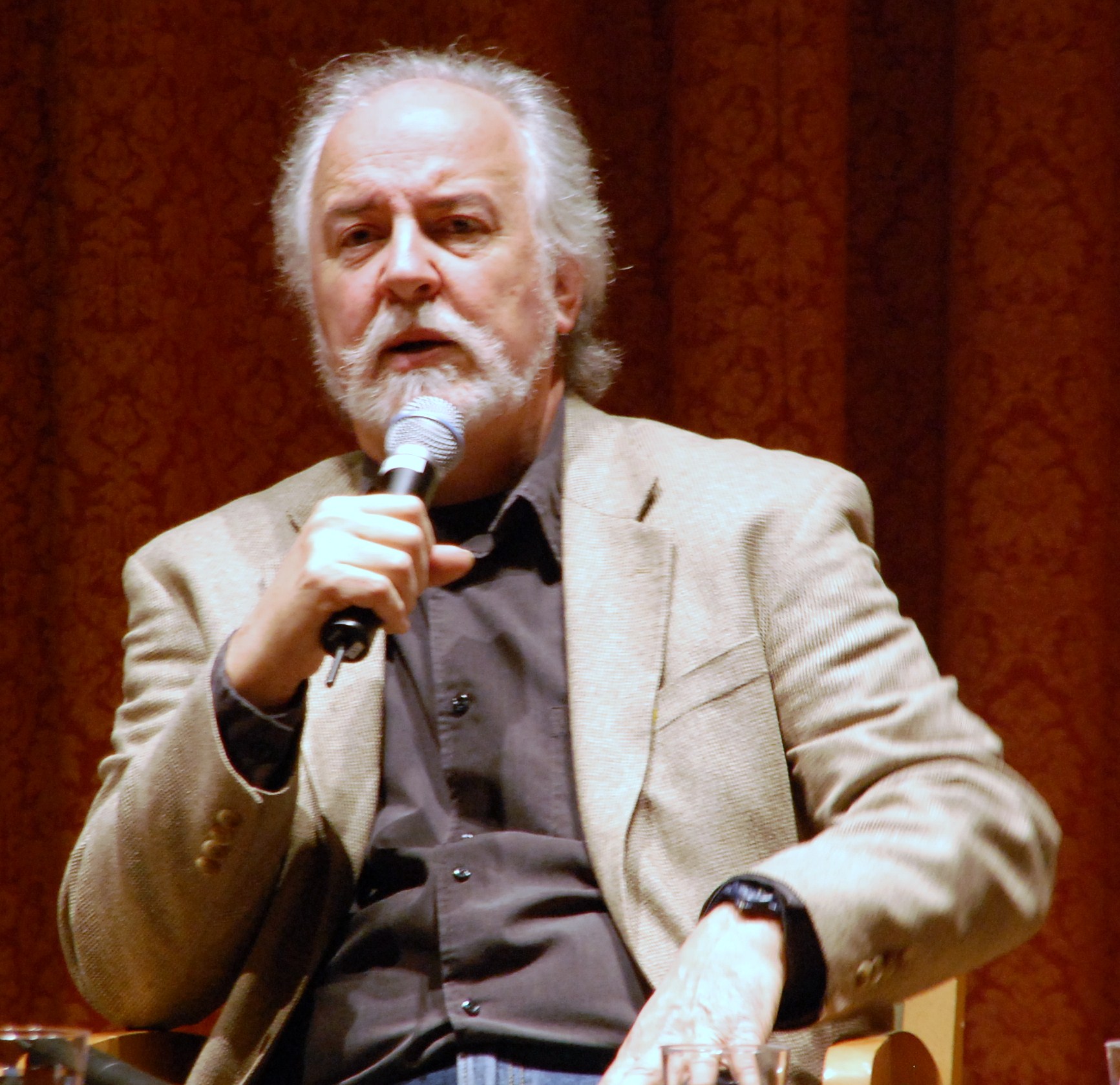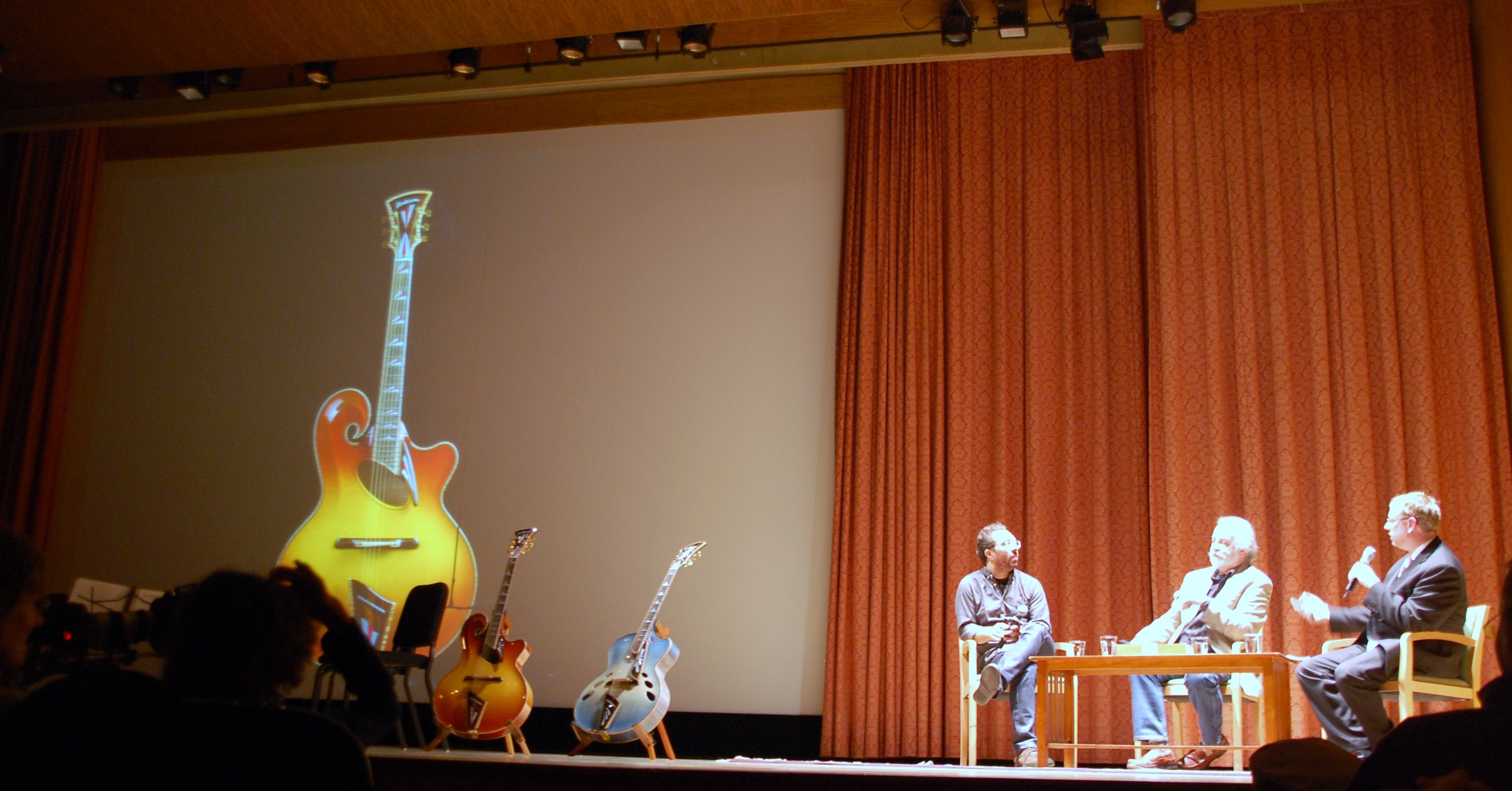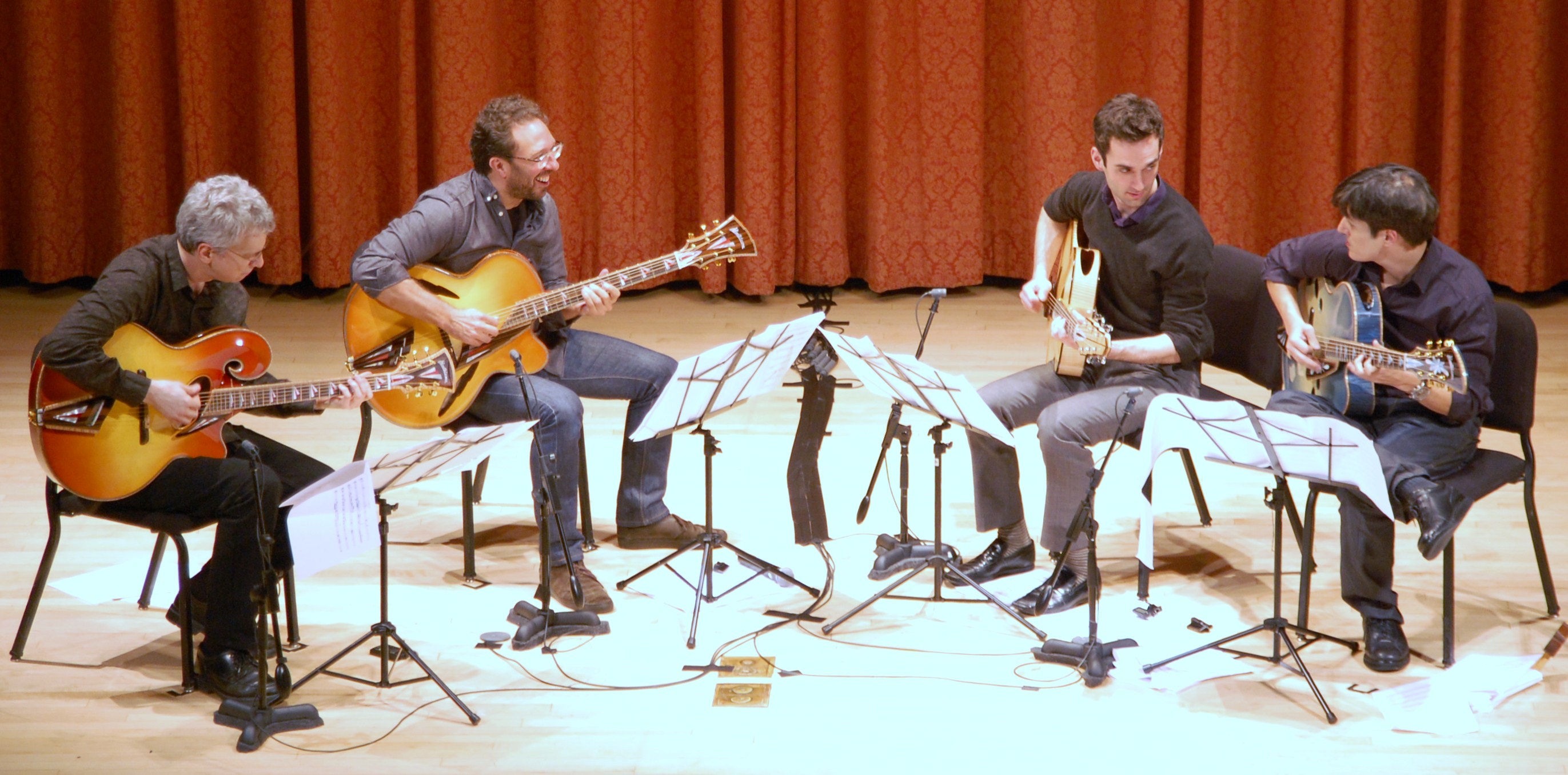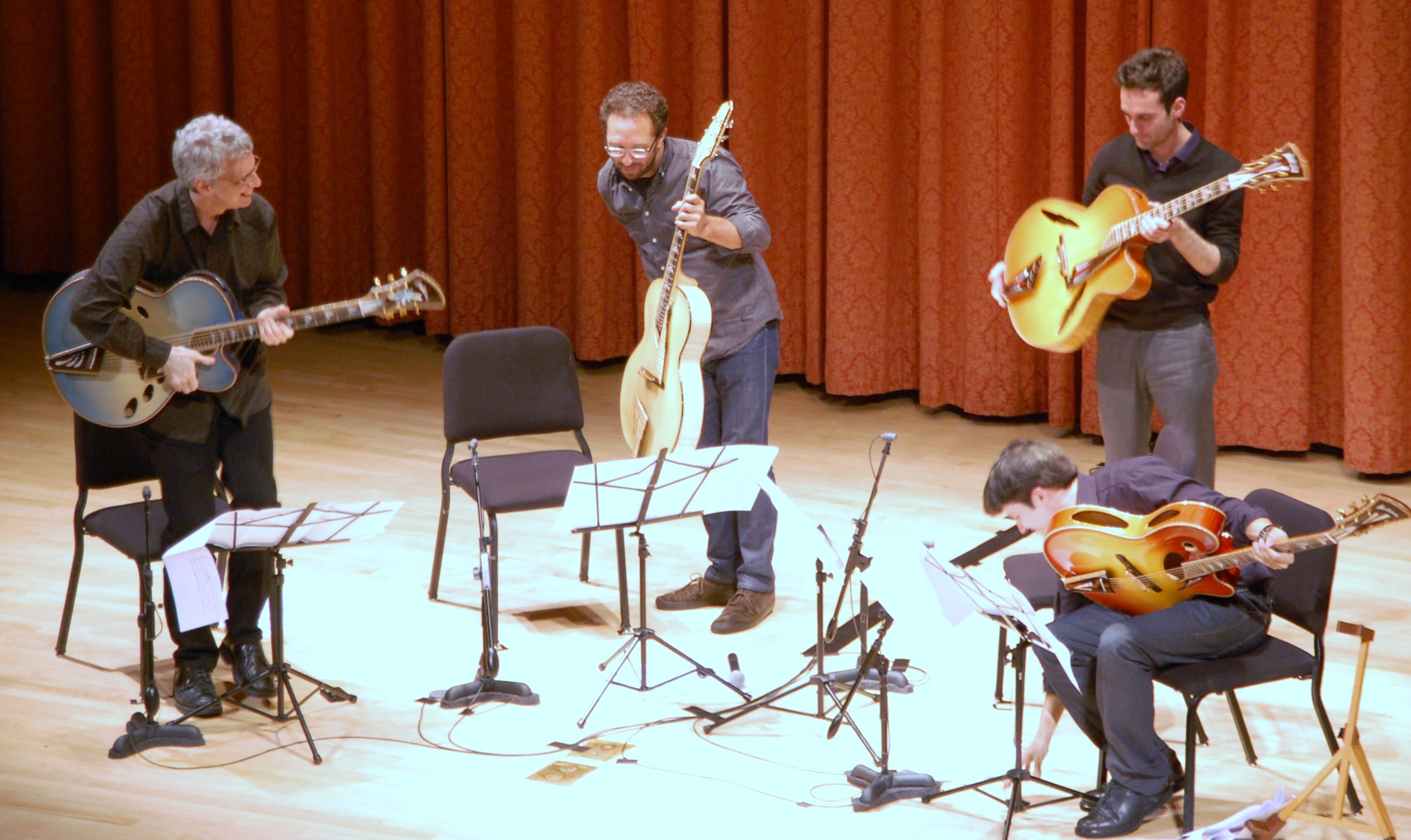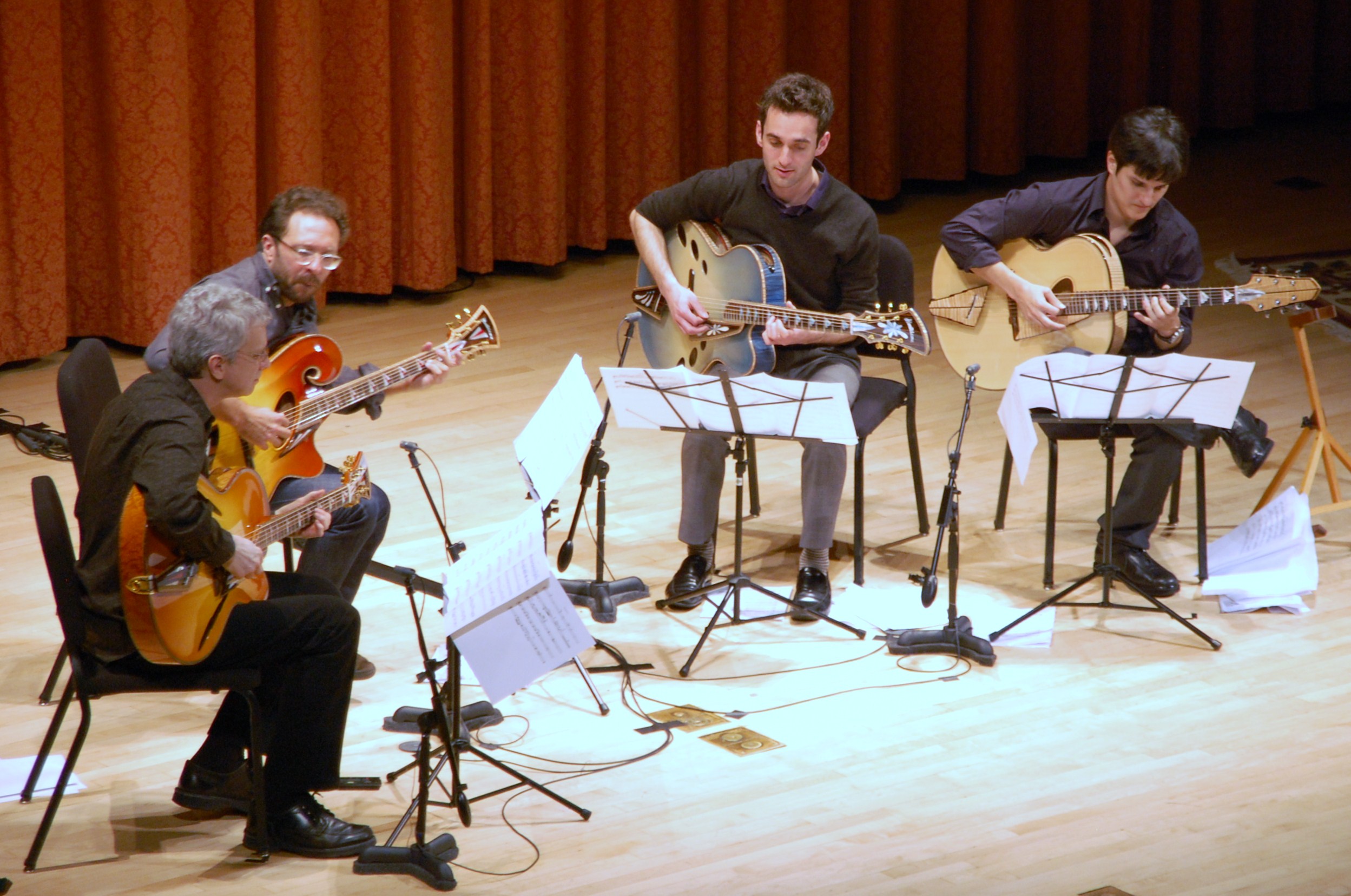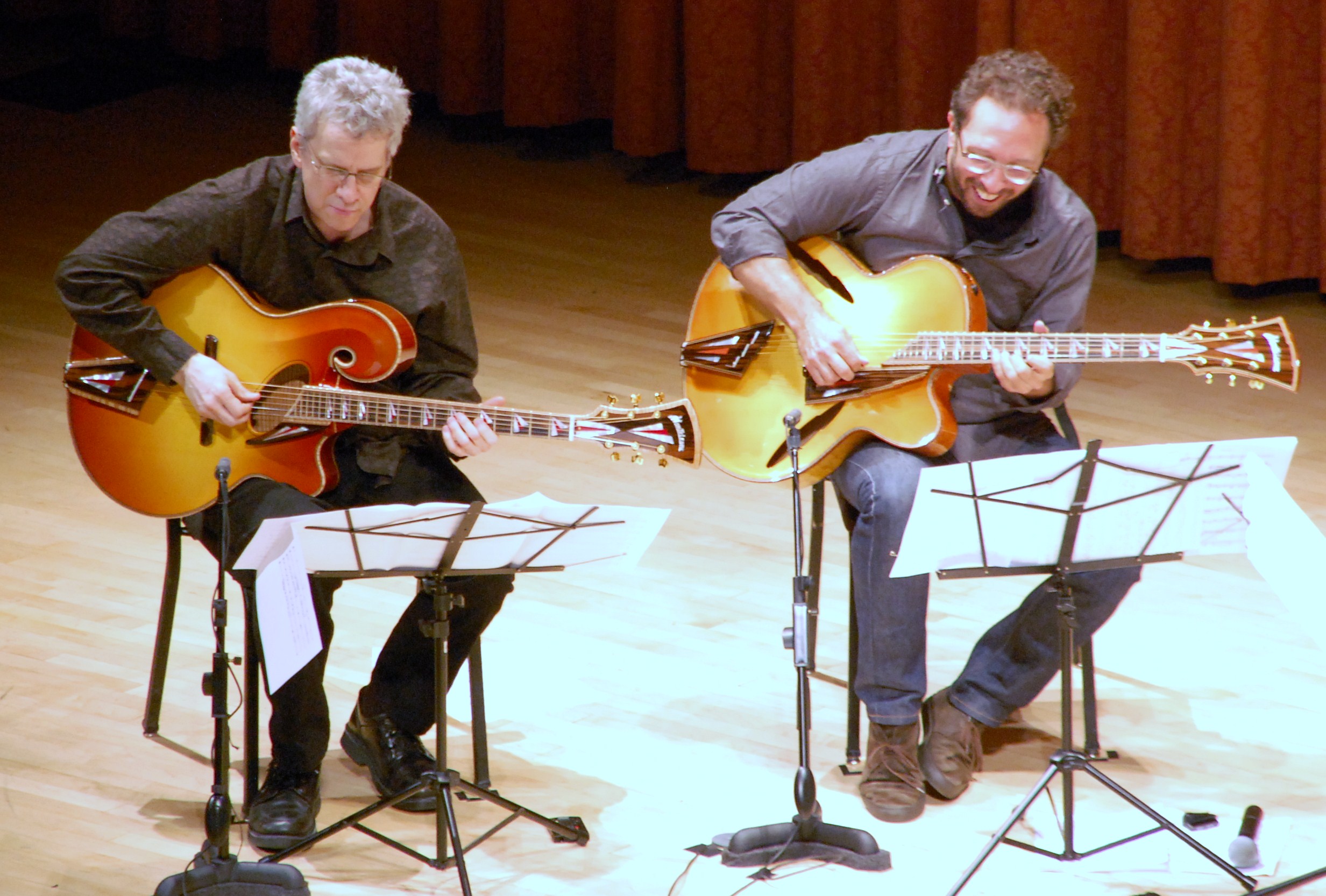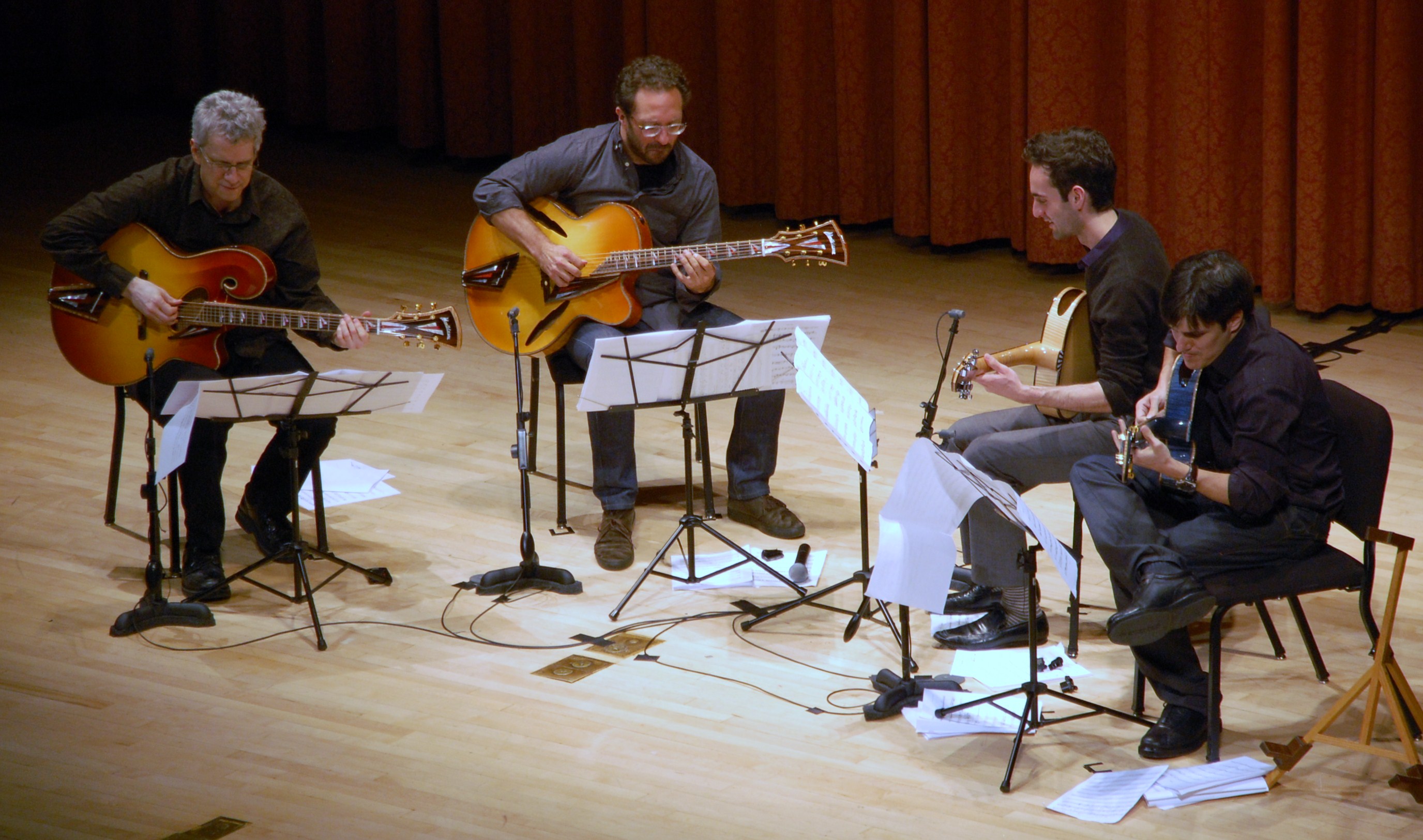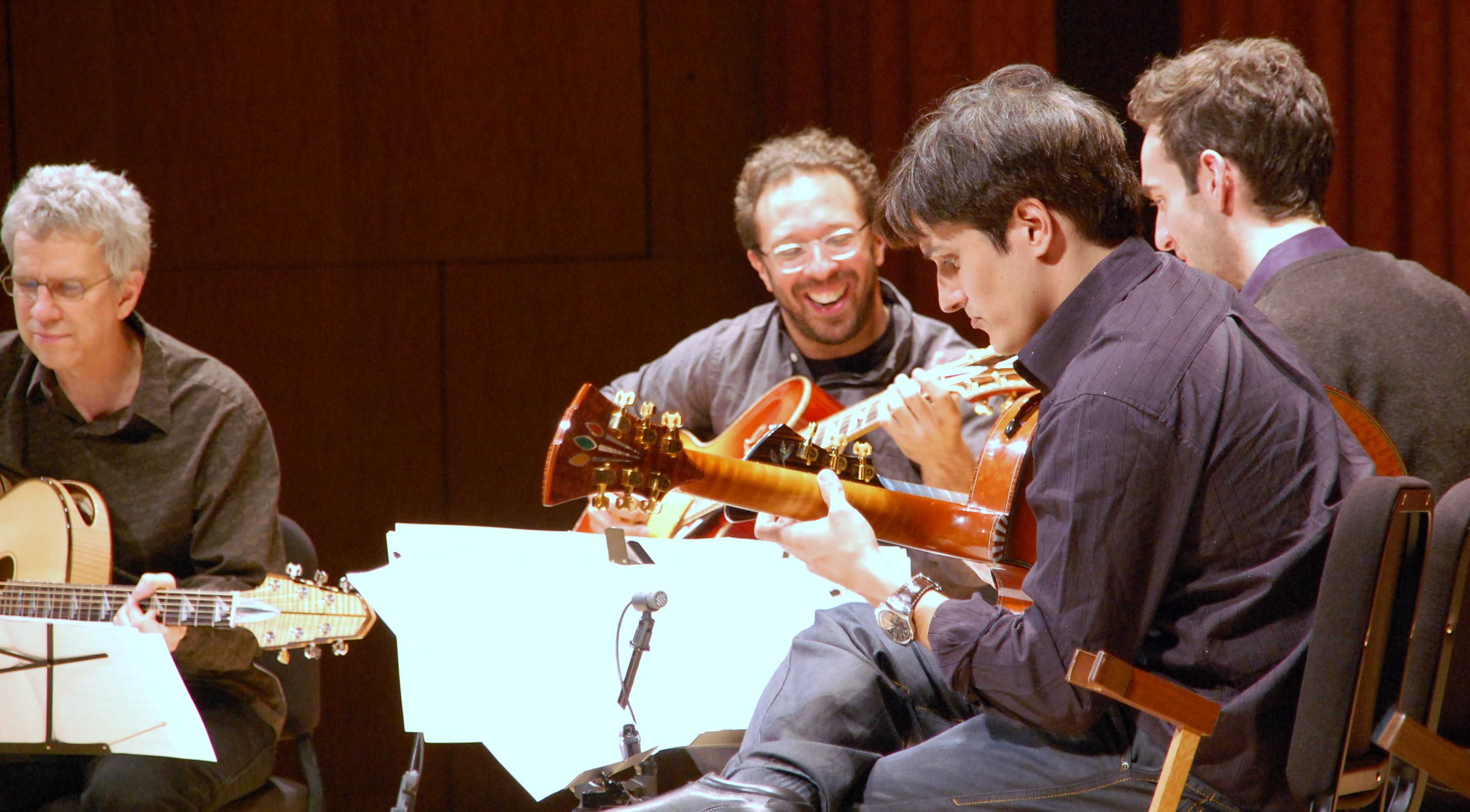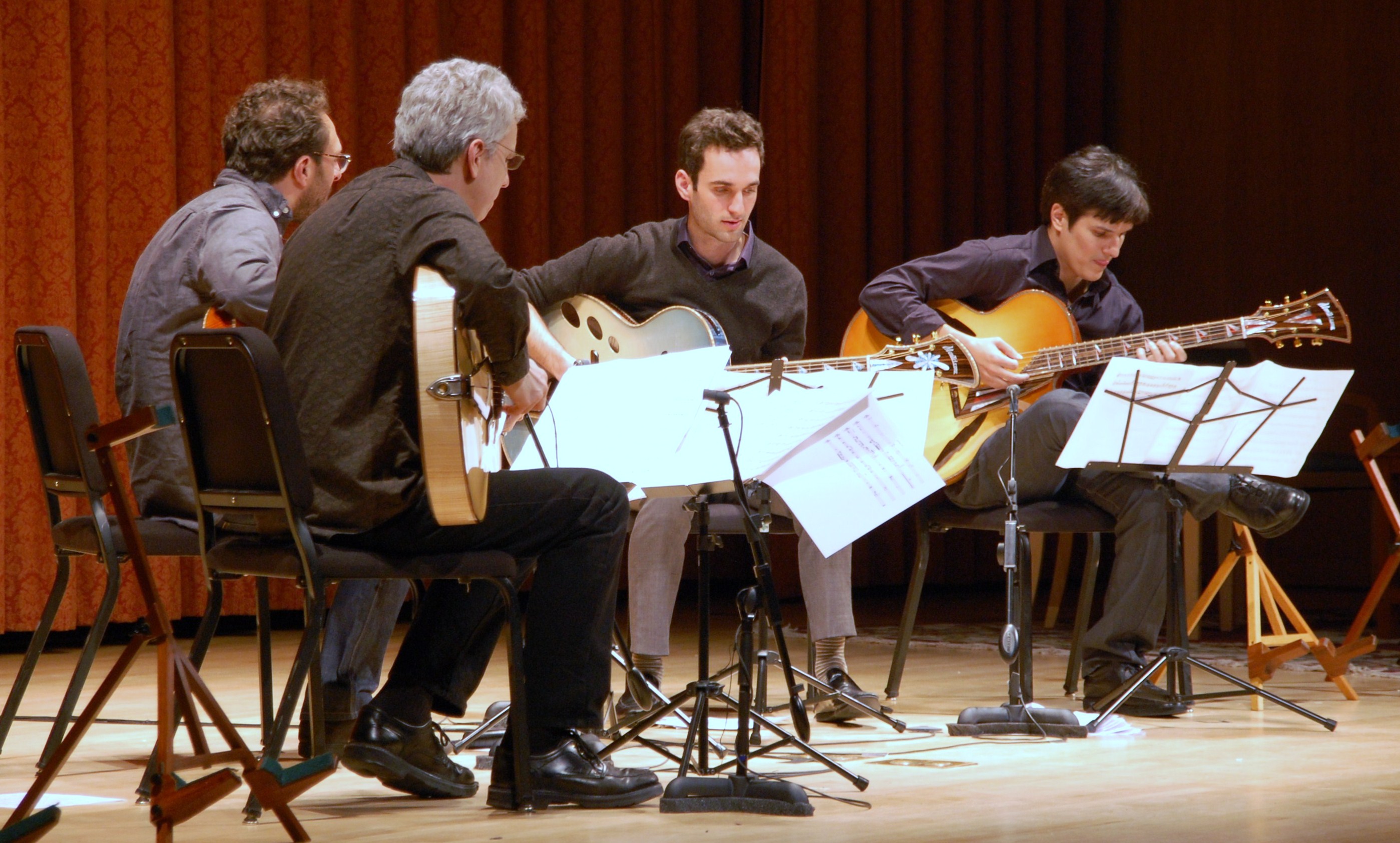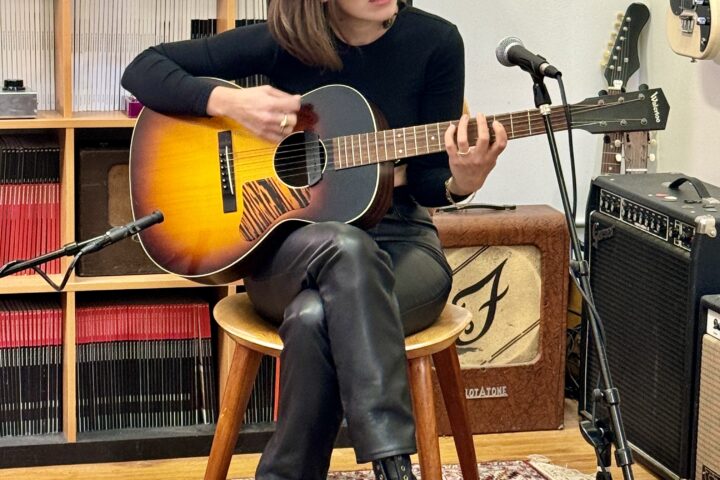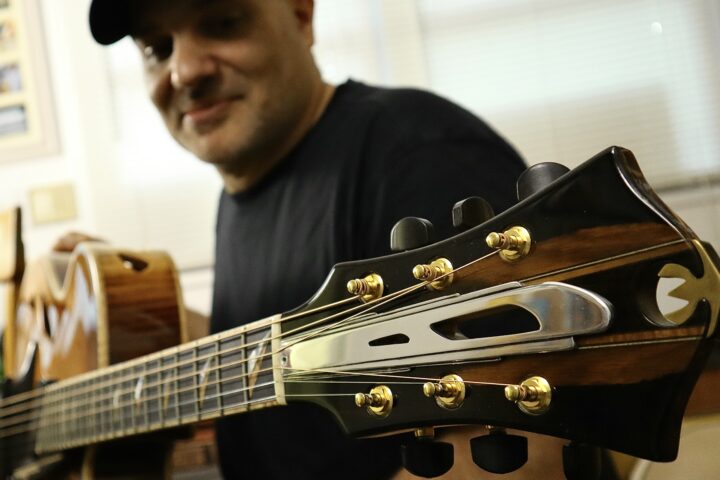“It started with the wood,” says John Monteleone, “really beautiful and especially good-sounding wood. And I thought, ‘Well, I’ll save this for something special.’”
“Something special” is unfolding at New York’s Metropolitan Museum of Art. Over the course of about six years, that wood morphed into four of the most exquisite musical instruments the world has ever witnessed. Monteleone built season-themed archtop guitars: Winter is an austere white, Spring is sky blue with floral-inspired inlays, Summer is adorned with touches of reds and browns, and Autumn is resplendent with golds, oranges, and yellows. Each bears Monteleone’s trademark huge side soundports, with some featuring sliding doors. The interior, yes, interior of each guitar – the inner wall of the treble side, to be specific – sports a scene depicting the guitar’s season. In Autumn, for example, a diamond-eyed old man winter blows multicolored diamond leaves, which are being raked up by a figure leaning into the wind and wearing a long coat and hat.
I had the privilege of playing these four guitars when I visited Monteleone’s shop in 2008 for my article in issue 12 of Fretboard Journal. They were four of the most impressive works of art I’ve ever encountered: stunning visually, glorious sonically, and beautiful playing instruments. At the time, Monteleone asked me to keep their existence secret. But, today the cat is well out of the bag. The four seasons sit at the center of the Met’s current exhibit, Guitar Heroes: Legendary Craftsmen from Italy to New York. More important to today’s festivities, Monteleone commissioned jazz guitarist Anthony Wilson to compose a piece especially for the four instruments. Assembled on stage are Wilson, Julian Lage, Steve Cardenas, and Chico Pinheiro. As Wilson points out when introducing his four-movement piece, each movement’s central theme features one guitarist on the aptly named guitar. But, he adds, “There’s a lot of other musical dialog going on.” And, between movements, there’s a bit of acrobatics: the guitarists stand up and quickly swap guitars so that the desired instrument lands in the hands of the designated musician.
The dialog is exquisite. Winter’s quiet theme is surrounded by muted whisperings. Spring bubbles while musical tulips sprout all around. Summer runs, skips, and leaps. Fall blows and then quietly meanders to winter’s return. The guitarists have had but four rehearsals over three days, but they work so well together that the organizers have revealed their confidence by recording this performance for DVD and CD releases.
It’s a lovely work, more guitar chamber concert then jazz concert, though Wilson is careful to note after the performance that he “left space for improvisation.” During the performance, Wilson is all smiles as he sees and hears his vision become reality. Lage, too, beams, and the other two guitarists look up to break into smiles now and then, too.
At concert’s end, the performers get a standing ovation, though the applause grows even louder when Monteleone takes the stage. Clearly, the audience members appreciate the instrument maker at least as much as they appreciate the music makers. When guitarists, composer, and luthier approach the stage edge to greet the audience, the biggest queue forms in front of Monteleone.
It’s a beautiful thing that the Met has done by combining exhibit and exhibitors. Audience member after audience member thanks Monteleone and the others for the “honor”’ of being able to attend the event.
If you missed this, don’t, uh, fret (sorry!). The Guitar Heroes exhibit runs through July 4, the Met’s museum is selling books and posters on line, and the DVD and CD will be available by fall.
As Monteleone puts it, “Each instrument and each musician has a unique voice.” So does the luthier. Bringing all nine voices together on one stage worked a couple of hours of magic.
